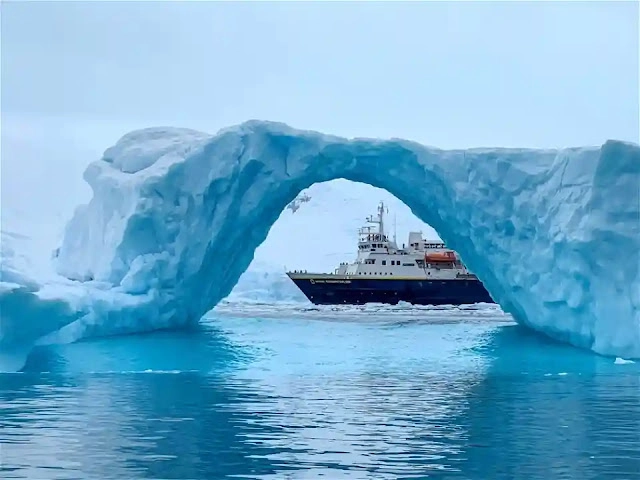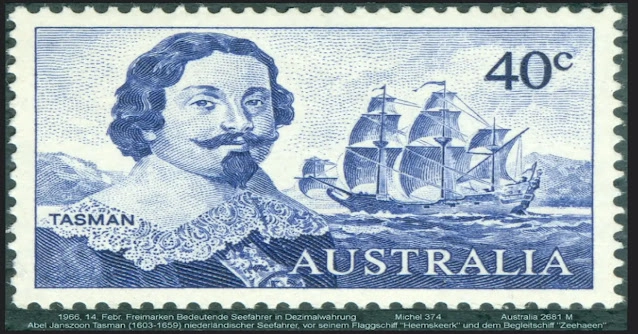Greenland: Unveiling the Enigmatic Beauty and Celestial
Solitude Greenland is a land of isolation and natural wonders, with a light population density and untouched fresh land. It offers a range of experiences, from exploring national parks and icy marvels to embracing cultural heritage and witnessing the beauty of the Northern Lights. With its fishing opportunities, colorful nature, and unique sunlight, Greenland captivates visitors with its extraordinary charm.
Greenland, the 12th largest country in the world, is a vast landmass that stretches across immense territories. Despite its substantial size, it is home to a relatively small population of only 56,000 people, resulting in a light population density of just 0.03 individuals per square kilometer. This light scattering means that most regions of the country remain uninhabited, providing plentiful opportunities to find isolation even in the capital city. Greenland’s unique population spreading sets it apart as a land of untouched fresh environment.
 |
Image Source: Google, The beautiful northern lights in Greeland |
Table of Contents:
- Preserving Arctic Wildlife: Greenland’s Northeastern National Park
- Greenland’s Icy Marvel: The Inland Ice and Captivating Rocks
- Coastal Habitations and Arctic Trails: Life in Greenland
- Greenland: A Land of Surprises and Strategic Importance
- Embracing Greenland’s Cultural Heritage: Dogsledding and Snowmobiles
- A Haven of Pristine Air, Untouched Nature, and Modern Living
- Greenland’s Arctic Wonders: UNESCO Sites, Northern Lights, and More
- Greenland’s Strategic Importance and Geopolitical Implications
Preserving Arctic Wildlife: Greenland’s Northeastern National Park
There is a massive national park in Greenland, established in 1974. This protected area serves as a reservation for Arctic wildlife, offering refuge to a diverse range of species. Access to this original wilderness requires special permission from the Greenlandic Government, ensuring the preservation of its fragile ecosystem. The northeastern national park stands as a testament to Greenland’s commitment to environmental conservation and provides an extraordinary opportunity to witness Arctic wildlife in their natural habitat.
Greenland’s Icy Marvel: The Inland Ice and Captivating Rocks
Greenland’s natural wonders extend beyond its vast landscapes and wildlife. One of the most remarkable features is the “inland ice,” the second-largest ice sheet in the world, surpassed only by Antarctica. This immense ice sheet can reach up to 3,500 meters in thickness in certain areas, creating a breathtaking spectacle when viewed from above. Flying over Greenland unveils an awe-inspiring panorama of ice and snow that stretches as far as the eye can see.
Additionally, Greenland’s rocks hold their own allure. Adorned with unique patterns and a distinctive sheen, these rocks possess a beauty unlike anywhere else in the world. Some of these rocks are home to valuable minerals and gemstones, adding an element of fascination to the land. Greenland’s geological treasures offer a glimpse into the earth’s history and serve as a testament to the country’s geological diversity.
Coastal Habitations and Arctic Trails: Life in Greenland
Due to the extensive ice cover, Greenland’s towns and settlements are primarily located along the coast. However, there is one exception – Kangerlussuaq. Situated at the end of a long fjord, Kangerlussuaq is an inland location that experiences some of the coldest weather in the country. This town serves as a significant point on the Arctic Circle Trail, a popular route for hikers seeking to explore Greenland’s rugged and pristine landscapes.
Greenland’s unique combination of coastal habitation and the Arctic Circle Trail offers visitors a chance to experience the contrasting aspects of life in this remote land. From the tranquility of coastal settlements to the challenging terrain of the trail, Greenland provides a distinctive and unforgettable adventure for those seeking to immerse themselves in its natural wonders.
 |
| Image Source:Google, Greenland Blue Water |
Greenland: A Land of Surprises and Strategic Importance
Greenland got its name from a Viking named Erik the Red, who wanted to attract settlers. Despite its icy appearance, the southern part of Greenland turns green in the summer. The native people used to call their land “Inuit Nunaat,” but now they call it “Kalaallit Nunaat,” which means “country of the Greenlanders.” The capital city, Nuuk, is very close to being the northernmost capital, but that title goes to Reykjavik since Greenland is part of Denmark.
If you want to go to Greenland, you can’t fly there directly. You have to first go to Copenhagen or Reykjavik. During World War II, Greenland was very important because it was on the fastest flight path between North America and Europe. Even today, Greenland has limited roads because of its rough terrain, deep fjords, small population, and huge ice sheet. So, instead of roads, people use the ocean and fjords as their main “highways.” In fact, more people in Greenland own boats than cars, especially in small towns where cars are rare. Greenland’s name, geography, and strategic location have shaped its unique character.
Embracing Greenland’s Cultural Heritage: Dogsledding and Snowmobiles
Dogsledding holds deep cultural significance in Greenland, especially for hunters during winter. However, snowmobiles are gradually replacing dogsleds. To preserve this cultural heritage, it is essential to experience a dogsledding trip in Greenland.
Greenland’s vastness offers unique Arctic adventures in every region. Each part of the island showcases distinct and breathtaking geography, providing travelers with a range of unforgettable experiences.
Despite the modernization and Western influence in recent years, Greenland continues to hold onto its rich cultural heritage. Even in the harsh Arctic winters, it’s not uncommon to witness the timeless sight of dogsleds and snowmobiles heading out into the frozen wilderness. Many Greenlanders still don their National Costume for special occasions, a tradition that connects them to their roots while others embrace contemporary fashion.
You May Also Read:
A Haven of Pristine Air, Untouched Nature, and Modern Living:
Greenland boasts pristine air quality with minimal human presence, cars, or industries. Travelers can drink from streams and rivers without the need for water filters, enjoying nature’s pure refreshment.
While Greenland has a mobile phone network and internet access, both can be expensive, slower than usual, and limited to towns and settlements. This limitation becomes an opportunity to disconnect, unwind, and fully immerse oneself in the tranquil surroundings.
Surprisingly, Greenland’s remote towns offer modern facilities. Each town typically has at least one supermarket stocked with products imported mainly from Denmark. Larger towns also feature high-quality restaurants serving international cuisine, ensuring a comfortable and satisfying visit.
Greenland’s Arctic Wonders: UNESCO Sites, Northern Lights, and More
Greenland has three UNESCO World Heritage Sites like Ilulissat Icefjord, Kujataa, and Aasivissuit-Nipisat, each offering unique cultural and natural experiences. Ilulissat Icefjord is famous for its colossal icebergs, but you can find icebergs of different sizes across the country.
Despite its Arctic desert conditions, attempts have been made to grow trees in Greenland, resulting in the largest “forests” found in South Greenland near Nanortalik and Narsarsuaq. With long winter nights and minimal light pollution, Greenland provides an ideal opportunity to witness the mesmerizing Northern Lights. Kangerlussuaq, with over 300 clear sky days annually, is an excellent location to experience this amazing natural phenomenon.
Greenland: Fishing Haven and Colorful Nature
Greenland is a paradise for fishing enthusiasts with its rich, cold waters teeming with fish like Arctic char, cod, salmon, and halibut. Its extensive coastline and fjords provide ample opportunities for fishermen. As the snow melts, Greenland’s Arctic vegetation bursts into life, surprising visitors with colorful wildflowers and the chance to forage for mushrooms, blueberries, and crowberries during the summer.
Unique Sunlight and Traditional Houses:
Above the Arctic Circle, Greenland experiences an extraordinary phenomenon. From around May 25 to July 25, the sun never sets, creating an eternal twilight. Conversely, during winter, the sun remains below the horizon for several months. In traditional Greenlandic houses, historically small and brightly painted, each color had a specific meaning related to the building’s purpose. While this tradition is evolving, many Greenlanders still hold onto their cultural heritage.
Houses Painted with a Purpose:
Greenland’s colonial history has left an enduring mark on its architectural landscape. Greenlandic houses are known for their small size and vibrant, eye-catching colors. Historically, the color of a house carried specific meanings, indicating its use. However, in modern times, Greenlanders have the freedom to choose the colors they prefer for their homes. This colorful display is not only visually striking but also reflects the evolving cultural identity of Greenland.
A Culinary Journey through Time:
Greenland’s cuisine is a testament to its long history and reliance on the land and sea. Traditional foods like whale, seal, fish, seafood, musk-ox, reindeer, and ptarmigan have sustained the Greenlandic Inuit for generations. These foods are not only part of their diet but also a significant aspect of their cultural identity. The anticipation of hunting seasons remains an annual highlight for many, reaffirming the enduring role of hunting in Greenlandic life.
 |
| Image Source: Google, Polar bears in North-East Greenland |
A Remarkable Multilingual Nation:
In 2009, Greenland achieved self-rule and made a significant decision regarding its official language. Danish was dropped, leaving Kalaallisut, the West Greenlandic language, as the sole official language of the country. However, most Greenlanders are fluent in Danish and a substantial percentage, especially in larger towns, have an excellent command of English. This multilingualism is a testament to the adaptability and resilience of the Greenlandic people.
Greenland’s Strategic Importance and Geopolitical Implications:
President Donald Trump’s renewed interest in acquiring Greenland underscores its geopolitical importance, particularly regarding U.S. national security and competition with China and Russia in the Arctic. Greenland’s autonomy has been expanding since it achieved self-governance in 1979, and its Prime Minister, Múte B. Egede, has clearly stated that “Greenland belongs to the Greenlandic people,” stressing the value of independence and self-rule. Amid geopolitical dynamics, Greenland’s governance prioritizes independence and self-rule, ensuring foreign interests respect its people’s sovereignty and consent.
Conclusion:
Greenland’s untouched landscapes, Arctic wildlife, and geological wonders make it a truly remarkable destination. From the vast inland ice to the coastal habitation and Arctic trails, the country offers diverse experiences for adventurers. With its rich cultural heritage, pristine air, and limited connectivity, Greenland is a land that invites visitors to unplug, connect with nature, and create lasting memories.
Frequently Asked Questions
Greenland got its name from a Viking named Erik the Red, who wanted to attract settlers. Despite its icy appearance, the southern part of Greenland turns green in the summer. The native people used to call their land “Inuit Nunaat,” but now they call it “Kalaallit Nunaat,” meaning “country of the Greenlanders.”
Greenland’s “inland ice” is the second-largest ice sheet in the world, surpassed only by Antarctica. It is one of the country’s most remarkable natural wonders, extending beyond its vast landscapes and wildlife.
Greenland has three UNESCO World Heritage Sites: Ilulissat Icefjord, Kujataa, and Aasivissuit-Nipisat, each offering unique cultural and natural experiences. Ilulissat Icefjord is famous for its colossal icebergs, which can also be found in various sizes across the country.
Above the Arctic Circle, Greenland experiences an extraordinary phenomenon where, from around May 25 to July 25, the sun never sets, creating an eternal twilight. Conversely, during winter, the sun remains below the horizon for several months.
In 2009, Greenland achieved self-rule and made Kalaallisut, the West Greenlandic language, the sole official language of the country, dropping Danish. However, most Greenlanders are fluent in Danish, and many, especially in larger towns, also have an excellent command of English. How did Greenland get its name?
What is Greenland’s “inland ice,” and why is it significant?
What are Greenland’s three UNESCO World Heritage Sites?
What is unique about Greenland’s daylight above the Arctic Circle?
What language became the sole official language of Greenland in 2009?









